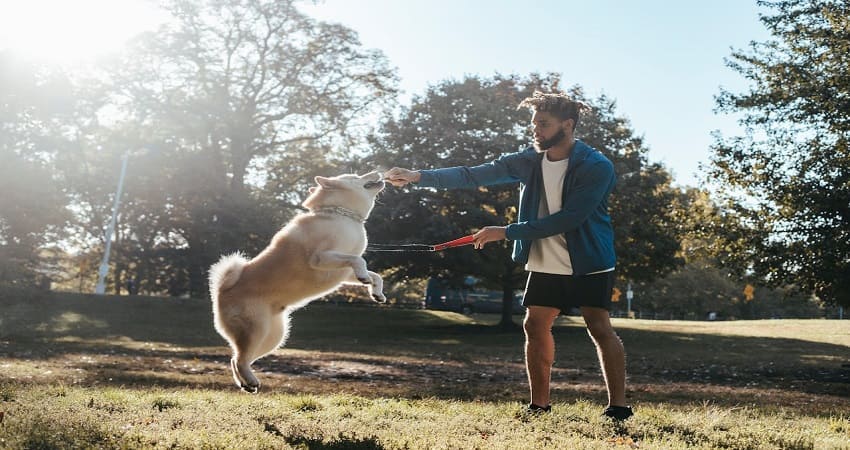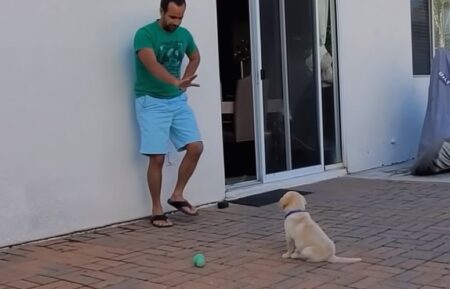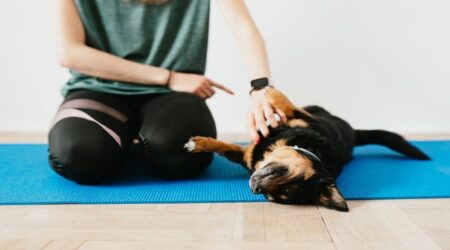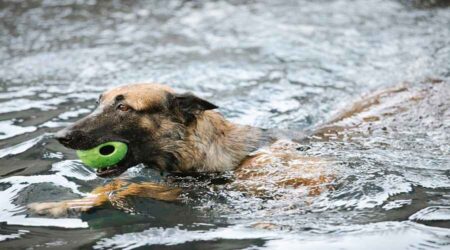Teaching a dog self-defense is a difficult and potentially dangerous task that needs careful thought and professional direction. Although it’s normal for dog owners to desire their companions to be self-sufficient, it’s crucial to handle this training responsibly and cautiously. The natural instinct of a dog to protect itself can be unpredictable, and using the wrong training techniques might cause aggression or other dangerous behaviors. Your dog’s safety and wellbeing must come first before starting any defense training. It is very advised to get advice from a qualified behaviorist or dog trainer who specializes in protective training. They may evaluate your dog’s temperament, offer advice on proper and safe training methods, and assist you in creating a thorough training schedule that is customized to meet your dog’s specific requirements.
The Importance Of Early Training
Establishing the groundwork for a dog’s behavior and molding their future development requires early training. Since puppies are highly impressionable and ready to learn, the early years of a dog’s life are the best times to introduce socialization, basic obedience instructions, and positive reinforcement methods. Early training creates the foundation for a well-mannered and well-behaved dog by preventing behavioral problems including aggression, fearfulness, and separation anxiety. Additionally, it fortifies the relationship between the dog and its owner by encouraging mutual understanding, communication, and trust. Owners may give their dogs the lifelong skills they need to succeed by devoting time and energy to early training.
Understanding Your Dog’s Temperament And Natural Instincts
Comprehending your dog’s disposition and innate tendencies is crucial to establishing a robust connection and fostering a peaceful partnership. Like people, dogs have distinct personalities that are influenced by their upbringing, genetics, and early experiences. You can modify training regimens and exercise schedules to meet your dog’s specific demands by keeping an eye on their behavior and temperamental characteristics, such as friendliness, energy level, and drive to hunt. Furthermore, by acknowledging and honoring your dog’s innate impulses—like hunting, protecting, or herding—you may use training and enrichment activities to harness these tendencies for good. In the end, knowing your dog’s nature and inclinations helps you to provide them the attention, direction, and surroundings they require to grow in all aspects—mental, emotional, and physical.
5 Tips for Training Your Dog to Protect You
To maintain safety and proper conduct, training a dog to defend you needs careful thought and professional direction. Although protection training should be used responsibly and cautiously, the following five general guidelines should be taken into account
Professional Guidance: Seek guidance from a professional dog trainer or behaviorist experienced in protection training. They can assess your dog’s temperament and provide tailored advice and training techniques.
Foundation Training: To build a solid foundation of control, communication, and trust with your dog, give basic obedience training top priority. More sophisticated protection training is built on commands like “sit,” “stay,” and “come”.
Socialization: From an early age, thoroughly socialize your dog with humans, other dogs, and different environments. A well-socialized dog is better able to recognize real threats and is less prone to behave aggressively out of fear or anxiety.
Controlled Exposure: Your dog should be gradually introduced to controlled situations that mimic possible risks or dangers. Teach children to distinguish between interactions that are normal and those that call for protective action.
Positive Reinforcement: Treats, praise, and play are examples of positive reinforcement strategies that can be used to promote desired protective actions. Steer clear of harsh approaches or punishments since these can incite fear or anger.
Keep in mind that only dogs with stable temperaments who are suitable for such activities should be trained in protection. Throughout the training process, keep your dog’s security and welfare as your top priorities.
Teach Your Dog Obedience Commands
It’s crucial for your dog’s safety, wellbeing, and relationship that you teach them obedience commands. To properly teach obedience commands, consider the following advice:
Start with Basics: Start with simple commands like “come,” “down,” “stay,” “sit,” and “heel.” The basis of obedience training consists of these directives.
Use Positive Reinforcement: Treats, compliments, or playtime should be given to your dog whenever they correctly obey an order. Dogs who get positive reinforcement are more likely to repeat desired behaviors.
Be Consistent: Every time you give an order, use the same hand signs and verbal instructions. Maintaining consistency enables your dog to comprehend expectations.
Keep Training Sessions Short: Because dogs have short attention spans, training sessions should be frequent and short—about five to ten minutes each. To keep your dog interested and motivated, end on a positive note.
Practice in Different Environments: Practice obeying orders in a variety of settings with varying degrees of distraction. Begin in a calm atmosphere and work your way up to increasingly difficult settings.
Use Real-Life Situations: Include obedience commands in routines. For example, ask your dog to sit before feeding time or to wait to cross the street.
Be Patient and Persistent: Since each dog learns differently, it is important to exercise patience and consistency when educating them. If your dog has trouble understanding a command, go back to the beginning and work with them until they do.
Seek Professional Help if Needed: Consider getting advice from a qualified dog trainer or behaviorist if you’re having problems teaching your dog obedience commands or if your dog is displaying behavioral problems.
By using these points and keeping an optimistic, patient mindset, you may successfully learn your dog obedience commands and fortify your relationship with them. Top of Form
Socialize Your Dog
It’s important to socialize your dog so that they can interact with humans, other dogs, and different situations in a safe and suitable manner, as well as for their mental and emotional well. The following advice can help in dog socialization:
Start Early: As soon as your dog is a puppy, or perhaps earlier, start socializing them. Fear and hostility are reduced later in life when socialization occurs early.
Expose to Various Environments: Expose your dog to a variety of settings, including parks, beaches, streets, and interior areas. Introducing children to novel sights, sounds, and scents enhances their adaptability and self-assurance.
Introduce to Different People: Give your dog the opportunity to socialize and engage with a range of people, including adults, kids, people wearing various outfits, and people using assistive devices. Make sure these exchanges are kind and constructive.
Dog-to-Dog Interactions: Set up playdates with amiable, vaccinated dogs to assist your dog in picking up acceptable social signs and behaviors. Keep a close eye on these exchanges and step in if needed to avoid any unpleasant experiences..
Positive Reinforcement: Reward your dog’s calm and amiable behavior throughout socialization sessions with food, compliments, and toys. They are encouraged to link novel experiences to successful results through positive reinforcement.
Gradual Exposure: Gradually expose your dog to various circumstances and surroundings; begin with less exciting settings and work your way up to more difficult ones.
Monitor Body Language: When your dog is being socialized, observe his body language. To avoid overpowering circumstances, watch out for indications of tension, anxiety, or discomfort and take appropriate action..
Consistency and Patience: Socialization is a continuous process that calls for perseverance and constancy. Assimilate socializing into your dog’s daily routine and keep exposing them to new things all throughout their lives.
Professional Training: To assist you in guiding your dog through the socialization process and addressing any particular issues or concerns, think about signing up for a puppy socialization class or working with a professional dog trainer..
By heeding these advice and prioritizing socializing, you may assist your dog in maturing into a well-mannered, self-assured, and amiable friend who can effortlessly handle a variety of social circumstances.
Teach Your Dog to Bark on Command
It can be entertaining and helpful to teach your dog to bark when instructed, but it’s crucial
should move cautiously in order to prevent excessive barking. Here’s how to train your dog to bark subdued and positively when given instructions:
Choose a Command Word: Select a certain word or phrase, like “speak” or “talk,” to serve as the command for barking.
Wait for Natural Barking: Initially, wait for your dog to bark on its own. This could occur during play, when they observe something interesting, or when they hear noises.
Add the Command: talk (“speak”) to your dog in a clear, cheerful voice as soon as it begins to bark on its own..
Reward the Behavior: As soon as your dog barks in response to hearing the command, give them plenty of praise and give them a treat or toy. This strengthens the link that exists between the action and the order..
Repeat and Reinforce: As soon as your dog barks in response to hearing the command, give them plenty of praise and give them a treat or toy. This strengthens the link that exists between the action and the order.
Use Visual Cues: To help your dog comprehend what you’re asking for, you can also combine the command word with a visual signal, such pointing to your mouth or making a speaking gesture with your hand.
Avoid Excessive Barking: Take care not to reward excessive barking. To stop your dog from barking incessantly, just use the order when it is suitable and don’t ask your dog to bark too often..
Be Patient: It could take some time and patience to train your dog to bark on demand, so be persistent and understanding in your training endeavors.
It’s important to keep training sessions brief, upbeat, and always conclude with a flourish. Take a pause and try again later if your dog starts to get confused or upset. In a regulated and enjoyable manner, your dog can learn to bark on command with regular practice and positive reward.
Teach Your Dog to Defend You
You should give great thought to teaching your dog to defend you, and seek professional advice. Establish a solid foundation for socializing and obedience training first. By exposing your dog to a variety of circumstances and praising attentive behavior without inciting conflict, you can help your dog develop natural protective instincts. Enroll in protection training courses taught by qualified instructors who can impart defense skills while stressing moderation and control in a safe manner. Refrain from inciting aggressive conduct outside of supervised training environments. Recall that a well-trained guard dog should be able to distinguish between actual threats and commonplace circumstances, placing an emphasis on protection above hostility. Prioritize safety and appropriate training methods at all times.
Think Long and Hard Before Training Your Dog to Attack
Attack dog training is a significant decision that has to be well thought through and supervised by an expert. Prior to starting this kind of training, Consider the possible outcomes and ethical ramifications carefully. Think about other protective strategies like alarm systems or self-defense techniques. Recognize that teaching a dog to attack entails moral and legal obligations because any violent conduct may lead to grave injury or legal repercussions. Aggressive training methods can also cause behavioral problems and endanger public safety. Consult with certified behaviorists and trainers for information on responsible and safe training techniques. When making this choice, put your dog’s welfare and other people’s safety first.
Teach Your Dog to Back Off
“Back off” or “leave it” is a useful command that can assist avoid confrontations and keep your dog safe in a variety of circumstances. This is how to teach your dog to move away:
Start with Basic Obedience: Make sure your dog understands the fundamental obedience instructions, such as “come,” “stay,” and “sit.” These commands help you and your dog develop a respectful and communicative relationship.
Introduce the Command: Show your dog the reward you have closed in your palm. Give a calm, firm “back off” or “leave it” command.
Create Distance: Encourage your dog to back away from the treat by extending your arm and moving it away from them while the treat is still in your closed palm.
Reward Compliance: offer your dog a reward from your other hand and offer them plenty of praise if they step back or turn their head away from it.
Repeat and Reinforce: Gradually increase the difficulty of the command by practicing it in diverse environments and with varied distractions. When it comes to cues and rewards, be consistent.
Use Real-Life Scenarios: Use the command when your dog might come across anything in the real world that they shouldn’t touch or approach, like food on the ground or a possibly hostile dog.
Be Patient: Exercise requires patience and consistency because it takes time and repetition to see results. If your dog doesn’t obey right away, don’t reprimand them; instead, use positive reinforcement to reward the desired behavior.
Practice Regularly: To help your dog remember the command, reinforce it with “back off” training throughout your everyday routine.
Breeds and Other Considerations
Breed traits and other considerations must be made when thinking about teaching your dog defensive or protective actions. Here are some crucial things to remember:
Breed Characteristics: Certain breeds have stronger guarding tendencies or are inherently more protective than others. breeds such as German Shepherds
Because of their devotion, intelligence, and protective temperament, Doberman Pinschers, Rottweiler’s, and Belgian Milionis are frequently employed in protection jobs.
Temperament: A dog’s temperament determines whether or not it is a good candidate for protection training. Dogs ought to be self-assured, steady, and devoted to their owners. Dogs that are scared or aggressive are not good candidates for protective training.
Age and Health: Training for protection should only be done on mature dogs who are in good physical and mental condition. Puppies might not be mature or stable enough for this kind of training because they are still growing.
Training Methods: Protection training calls for specific expertise and should only be administered by qualified experts that put the dog’s safety and wellbeing first while utilizing positive reinforcement methods.
Legal Considerations: Recognize the legal ramifications of owning a dog trained for protection. Strict laws governing the ownership and instruction of protection dogs can be found everywhere. Furthermore, owners can be responsible for any damage their dog does.
Alternative Training: Instead of confronting your dog physically, try other deterrent-focused training techniques, such teaching it to bark to warn you of impending danger..
Consultation: Speak with a qualified dog trainer or behaviorist who specializes in this field before beginning protective training. They can determine whether your dog is a good fit for the situation at hand and offer advice on how to proceed.
Training Your Dog May Change His Personality
The way you train your dog may have an effect on their personality. The relationship between you and your dog may be strengthened and confidence can be increased with positive reinforcement training techniques, which will result in a more well-mannered and obedient pet. However, punishing your dog or using harsh training methods might make them scared, anxious, or aggressive, which can negatively impact their behavior and personality. It’s critical to employ kind, reliable techniques that emphasize praising desired actions rather than punishing bad behavior. To guarantee success, training should also be customized to your dog’s unique needs and temperament. A dog that receives regular training and socializing will have a more balanced, happy, and well-rounded personality.
A Personal Protection Dog Can Be a Liability
Having a personal security dog can increase your chance of getting sued. Even though these dogs are taught to defend their owners and belongings, there are a few things to remember:
Legal Liability: Whether or not your dog is acting in self-defense, you could still be held legally liable for any harm or losses your dog causes. This includes circumstances in which your dog acts aggressively in response to what it believes to be a threat, even if it is unfounded.
Public Perception: Individual defense Dogs may cause anxiety or discomfort in your neighborhood if they are thought to be violent or dangerous by others. This belief may have negative social or legal effects, such as neighbor complaints or limitations on dog ownership.
Training Requirements: For personal protection canines to be able to distinguish between actual dangers and non-threats and react accordingly, proper training is necessary. The likelihood of mishaps or incidents might be raised by inadequate training or inappropriate handling.
Management and Control: Owners of personal protection dogs need to be equipped with the knowledge and tools necessary to effectively manage and control their dog’s behavior. Neglecting to do so may result in hazardous circumstances and legal ramifications.
Insurance Considerations: Personal protection dogs could be subject to higher premiums or coverage limitations from some insurance companies if they are deemed high-risk breeds. For your insurance to offer the right coverage, you must send details about your dog to your insurer.
Physical Exercises To Enhance Your Dog’s Strength And Agility:
To improve your dog’s strength and agility, you can include the following physical activities in their routine:
Walking and Hiking: Frequent walks and treks in a variety of terrain assist your dog’s cardiovascular system and muscular strength. Walks should be gradually lengthened and intensified to test your dog’s endurance.
Running and Sprinting: Dog parks and fenced-in yards are safe, open spaces where you may let your dog run free. For added speed and agility, you can also include brief sprints or interval training sessions..
Obstacle Courses: Use obstacles like cones, tunnels, hurdles, and balance beams to set up an obstacle course. As you lead your dog around the course, encourage them to precisely and nimbly negotiate obstacles..
Fetch and Retrieval Games: Your dog’s power and coordination will improve when you play retrieve or retrieval activities with toys or balls, especially when you incorporate uphill or downhill throws.
Swimming: Swimming is a great low-impact workout that increases the cardiovascular fitness and muscle strength of your dog. If your dog needs flotation equipment, especially for beginner swimmers, keep a tight eye on them and offer them.
Agility Training: Provide obstacles like weave poles, tunnels, jumps, and A-frames to create an agility course. As you practice together, give your dog praise for correctly and quickly traversing the course’s hazards.
Stair Climbing: To build stronger leg muscles and enhance general fitness, encourage your dog to climb stairs or inclines. Begin with a few steps and as your dog gains confidence, progressively raise the level of difficulty.
Balance Exercises: To test your dog’s balance and proprioception, use wobble cushions, balance boards, or uneven surfaces. The stability and strength of the core are enhanced by these exercises.
Tug-of-War:
Play tug-of-war games under control with a robust rope or toy. This exercise improves the general body conditioning, neck muscles, and jaw strength of your dog.
Cool Down and Stretching:
To avoid muscle stiffness and damage, let your dog cool down gradually after each workout and give them some light stretches.
Conclusion
Physical activity that improves your dog’s strength and agility benefits not just their physical health but also their general pleasure and well-being. Your dog can develop cardiovascular endurance, coordination, and muscle strength by engaging in a range of activities like walking, running, obstacle courses, and agility training. These activities improve the link between you and your animal friend and offer cerebral stimulation as well. But it’s important to adjust the workouts to your dog’s specific requirements, build up the intensity gradually, and put safety first at all times. You can both live a happy and active existence together and help your dog realize their full potential with perseverance, consistency, and a positive outlook.






